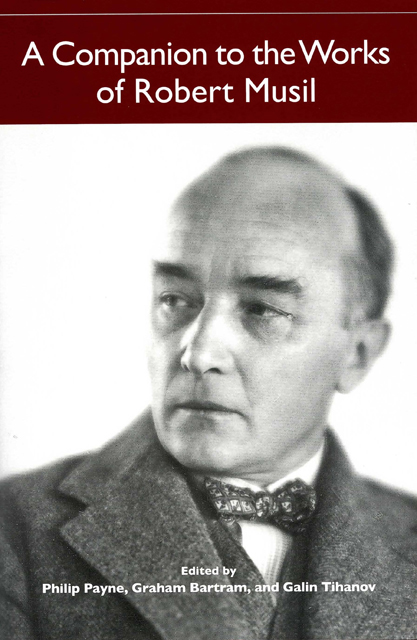Book contents
- Frontmatter
- Dedication
- Contents
- Preface
- Acknowledgments
- List of Abbreviations
- Musil's Principal Works
- Miscellaneous Frontmatter
- Introduction The Symbiosis of Robert Musil's Life and Works
- Musil's Life: Experiences, Reflections, Emotions of an Intellectual
- Literary Works before Der Mann ohne Eigenschaften
- Perspectives on Der Mann ohne Eigenschaften
- Select Bibliography
- Robert Musil's Life: A Chronology
- Notes on the Contributors
- Index
13 - The “Finale” of Der Mann ohne Eigenschaften: Competing Editions and the “Telos” of the Narrative
Published online by Cambridge University Press: 15 March 2023
- Frontmatter
- Dedication
- Contents
- Preface
- Acknowledgments
- List of Abbreviations
- Musil's Principal Works
- Miscellaneous Frontmatter
- Introduction The Symbiosis of Robert Musil's Life and Works
- Musil's Life: Experiences, Reflections, Emotions of an Intellectual
- Literary Works before Der Mann ohne Eigenschaften
- Perspectives on Der Mann ohne Eigenschaften
- Select Bibliography
- Robert Musil's Life: A Chronology
- Notes on the Contributors
- Index
Summary
Landing and Merging
Let us Imagine the Movement of the narrative as images — as a flightpath that rises quickly into the air and, at a particular point, necessarily turns and moves downward. Or as a stream that moves now more quickly, now more gently in a direction of flow that has started at some point and that will later diverge and meander. Both images display, to a greater or lesser degree, the teleology of narrative. The slope of a downward movement toward a goal can be almost vertically steep, which means that the narrative lands with the impact of a projectile, or the slope toward the ending is gentle and movement is virtually at a standstill, so that the point where it merges, as it were, with a large body of water is delayed and is virtually impossible to predict. Landing and merging are the conditions in which the movement stops at the goal that is either expected or unexpected. The natural law of limited motion — there also exists unlimited motion, an eternal circling — dominates the human activity of narrative, a social and communicative form of activity that, like all things human, is subject to limits and that inevitably implies landing and merging. Let us suppose that the relationship between the natural law and the human law of narration is capable of being expressed in an image — what is peculiar to human narrative can be expressed in the flight- and flowpath of nature as a Parabel (which means in German both “parabola” and “parable” — henceforth in this chapter we shall use this German word with its dual meaning); then the ambiguity is apposite: that which we perceive and describe is our own construction — the Parabel is something in our head.
Musil's Vectors
Musil was, of course, well versed in mathematics and science; at the same time he thought hard about the act of narrating and had reflected on the crisis in writing when he received the first public responses to the novel Der Mann ohne Eigenschaften.
- Type
- Chapter
- Information
- A Companion to the Works of Robert Musil , pp. 371 - 394Publisher: Boydell & BrewerPrint publication year: 2010



